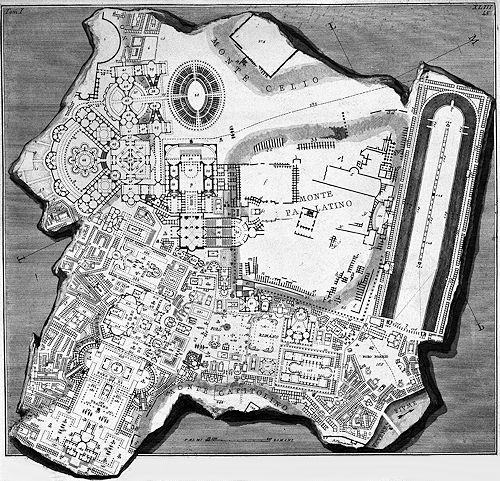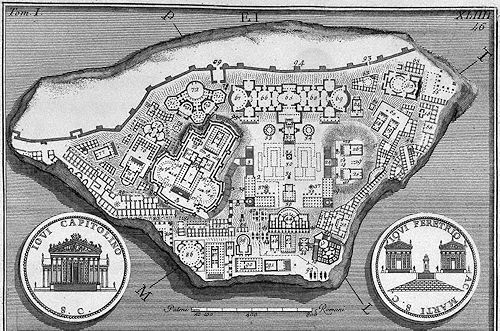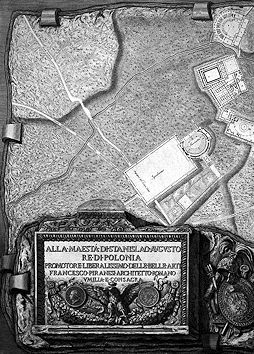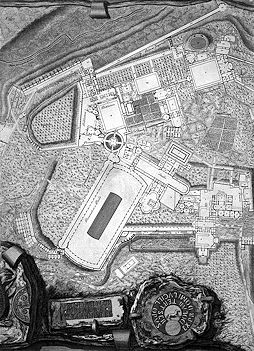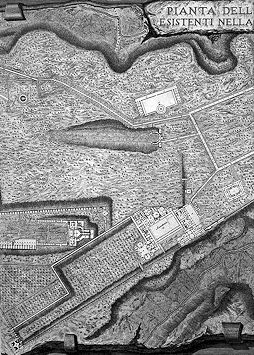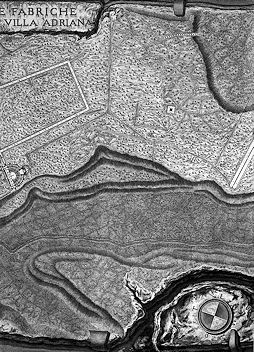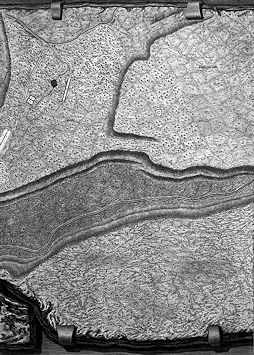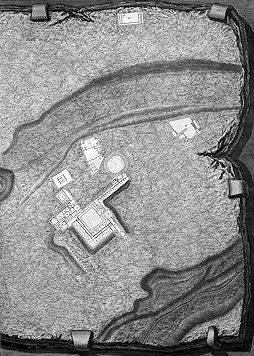piranesi |
1983 |
|
|
|
| This concern with visionary plans assumed a fresh significance and urgency as Piranesi gradually became involved in the cut-and-thrust of the Graeco-Roman controversy in the 1750s while he was preparing the Antichitŕ Romane. Confronted by Laugier's sharp attack on the imaginative licence, or caprice, of baroque designers such as Borromini and his followers, in the name of Greek simplicity and functionalism, Piranesi intensified his studies of the complexity of Imperial Roman planning.8 This is reflected in his tendentious reconstruction of the Nymphaeum of Nero (Antichitŕ Romane, I, pl. XLI)--an example of what might be regarded as 'poetic truth' in following the spirit rather than the letter of Roman achievement. This provocative approach is paralleled by other acts of creative archaeology when Piranesi attempted to recover vanished elements in the plans of the Forum Romanum (I, pI. XLIII) and of the Capitoline Hill (I, pI. XLIIII) in relation to existing fragments which he carefully distinguished by means of darker hatching in the etched plates. In this exercise of visionary reconstruction he would have been inspired by his current survey of the Villa Adriana at Tivoli, as published posthumously in 1781, by his study of the more original tomb designs fostered by Montano's 17th-century researches, as well as by Bianchini's earlier investigations of the Palatine site.9 |
|
|
|
|
|
|
|
|
8 See W. Herrmann, Laugier and Eighteenth-Century French Theory, London 1962,pp. 51, 61; 9 For Piranesi's survey of Hadrian's Villa, Tivoli, which began during the 1750s and was intensified in the next two decades, see the entry relating to the preparatory drawing in Naples for the plan of the Villa Adriana (etched and published by Francesco Piranesi in 1781) in the exhibition catalogue, Piranesi: Disegni (ed. A. Bettagno), Fondazione Giorgio Cini, Venice 1978, pp. 65-66 (77). The significance of the researches of Montano and Bianchini for Piranesi is examined in J. Wilton-Ely, The Art and Mind of Piranesi, London, 1978, pp. 45, 59-60.
|
|
|
|
|
|
Quondam © 2021.10.24 |

